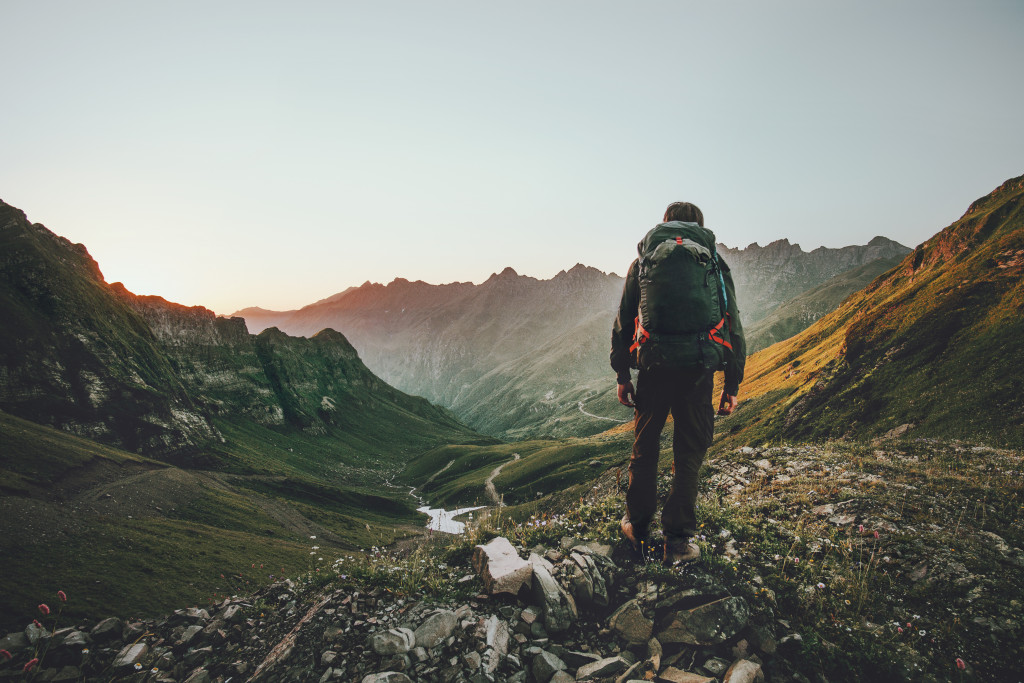Is living off the grid a part of your New Year’s resolution? Then you’re not alone. The data shows that almost 2 billion people are living the lifestyle.
No one can fault you for doing that. The costs of utilities are increasing, taxes are higher than before, and off-grid living can be sustainable. It is excellent for the environment as more people become less dependent on conventional electricity that still uses fossil fuels.
But it also pays to be prepared before you embrace the lifestyle. This article will learn the broad definition of living off-grid, breaking some myths people have about it. You will also identify the essential tools you don’t know you need to make yourself as sustainable as possible.

What Is Off-Grid Living?
There is no one-size-fits-all answer to this question. It largely depends on your location and the resources available to you. But in general, living off-grid means being self-sufficient, using natural resources to provide for your needs.
That includes generating your power, collecting and managing your water supply, creating your waste management system, and growing your food to survive.
Living off-grid also considers the following:
- State Rules: Some state rules can prevent a complete off-grid lifestyle. For example, it is illegal to collect rainwater in Colorado. Other places also limit the amount of water you can manage. Some areas may be off-limits for building a homestead or even a cabin. Others impose a specific minimum size for the home.
- Financial Capability: Although self-sufficiency can be cost-effective in the long run, it is usually expensive initially. You may need to set up a solar panel, for example, which can cost $15,000, depending on the amount of power you want to generate. If you still want to use the Internet, the best option is a satellite with a monthly $60 to $300.
- Life Skills: Off-grid living can involve knowledge in engineering, biology, chemistry, and more. You will also need to know how to work with your hands.
You can make your transition to an off-grid lifestyle smoother by remembering the following:
- You don’t need to live in a forest or deserted area to begin an off-grid lifestyle. The most straightforward step is to find ways to cut off your reliance on conventional utilities provided by the state, such as water, waste disposal, and electricity. Then, you can use the alternatives like renewable energy, recycling or reusing, and rainwater collection.
- Take stock of your resources. How much money do you have? What are your life skills? What kind of climate do you live in?
- You can always start with minor changes. You don’t need to go all-in overnight. Start by unplugging electronics when they’re not in use, using a clothesline to dry your clothes, or taking a shower instead of a bath.
Invest in the Right Tools
Off-grid living is also more effortless when you have the right equipment:
1. Winch
A winch is a mechanical tool composed of one or more spools of cable or rope rotated by a hand-crank, motor, or engine. You can use a winch to move large logs for your fireplace, help you get your kayak out of the water, or pull your car out of a ditch. You can use it with your vehicle by attaching its hook to items like felled trees or boulders.
Consider buying electric winches you can hook up to batteries, generators, or electricity powered by renewable energy. They are less noisy, easy to use, and less exhausting for the arms.
2. Generator
Living off-grid means having a backup if the energy source is unavailable or unusable. Think of storms, tornadoes, and other natural disasters.
You have different options for generators:
- Portable: A portable generator is small, lightweight, and easy to carry. It runs on gasoline or propane and is ideal for short-term emergencies.
- Standby: A standby generator kicks in automatically when the power goes out. It’s more expensive than a portable generator but will run longer without refueling.
- Hybrid: A hybrid generator runs on both gasoline and electricity. It is more expensive than a portable generator, but it’s easy to start and won’t produce noise.
3. Water Collection
You can collect rainwater to clean, water plants, and do other tasks around the house. You can set up a rain barrel or cistern to store the water or install a gutter system to direct the water into barrels, tanks, or cisterns.
Common types of rainwater tanks include:
- Underground: An underground rainwater tank is the most popular type. It’s easy to install, economical, and does not take up space.
- Concrete: A concrete rainwater tank is durable and customized to fit your needs. However, it is expensive and takes up a lot of space.
- Metal: A metal rainwater tank is the smallest and most portable type. It is also the least durable since it can rust easily and is challenging to install.
4. Toilet
You can use your typical flush toilet until you are ready to invest in a composting toilet, which is more expensive but worth it for its convenience. There are inexpensive options like the Luggable Loo, a portable toilet you can use for camping or emergencies.
When you live off-grid, you become your superhero. You take care of things on your own and do what’s needed for survival. Use these tips to jump-start your new lifestyle and start saving money on utilities today.

